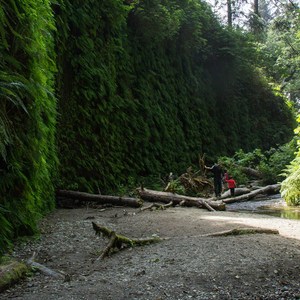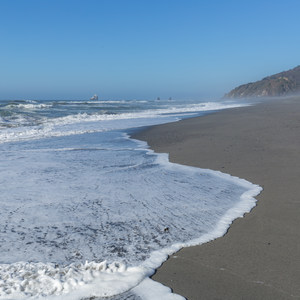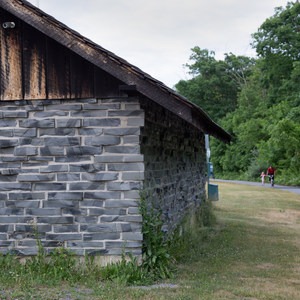You are here
Arguably no other coastal redwood forest in the world creates the same sense of awe as Prairie Creek Redwoods State Park in Redwood National and State Parks, and the Miner's Ridge Trail is one of the best. The height of old-growth coastal redwoods is unmatched by any other living organism on the planet. The Miner's Ridge Trail passes exclusively through a redwood forest, putting you straight in the heart of a very old and enchanting ecosystem. However, the redwoods are not the only organisms that will catch your eye. Majestic elk and black bear are commonly seen roaming through these woods, while stretches of 5 foot ferns and fog help maintain the feeling of a hiking within a fairy tale.
A typical hike along Miner's Ridge Trail begins at the Prairie Creek Visitor Center on a short section of the James Irvine Trail and ends at Gold Bluffs Beach Campground, though there are many other options available. A backpacking trip along this trail with an overnight stay in Gold Bluffs Beach hiking/biking camp is highly recommended. From the Gold Bluffs Beach hikers and backpackers can walk 1.5 miles north along the road or beach and visit the famous Fern Canyon. From Fern Canyon the James Irvine Trail is recommended to take visitors back to the Prairie Creek Visitor Center. All backpackers are required to obtain a parking and backcountry permit from a Redwood National and State Park visitor center prior to their trip.
People come from all around the world to witness the imposing presence and beauty of the coastal redwood (Sequoia sempervirens). Most commonly known as the tallest living organism on earth, these trees have many other interesting characteristics. They are one of the world's fastest growing species of conifer, sprouting from cones just an inch long! Coastal redwoods also can sprout from the base of a parent tree and take advantage of the parent's root system for nutrient and energy needs. Many visitors will see charred hollow remnants of once great redwoods. These stumps remain from forest fires of the past. The coastal redwood's bark is a great protector from fire, and sometimes it is most of what remains once the fire has burned out the inside of a standing tree. Though fires may seem destructive to redwoods and other life within the park, natural fires play a crucial role in the maintenance of a healthy redwood forest by clearing dead understory material and providing new opportunities for redwoods to grow.








Comments
Sign In and share them.